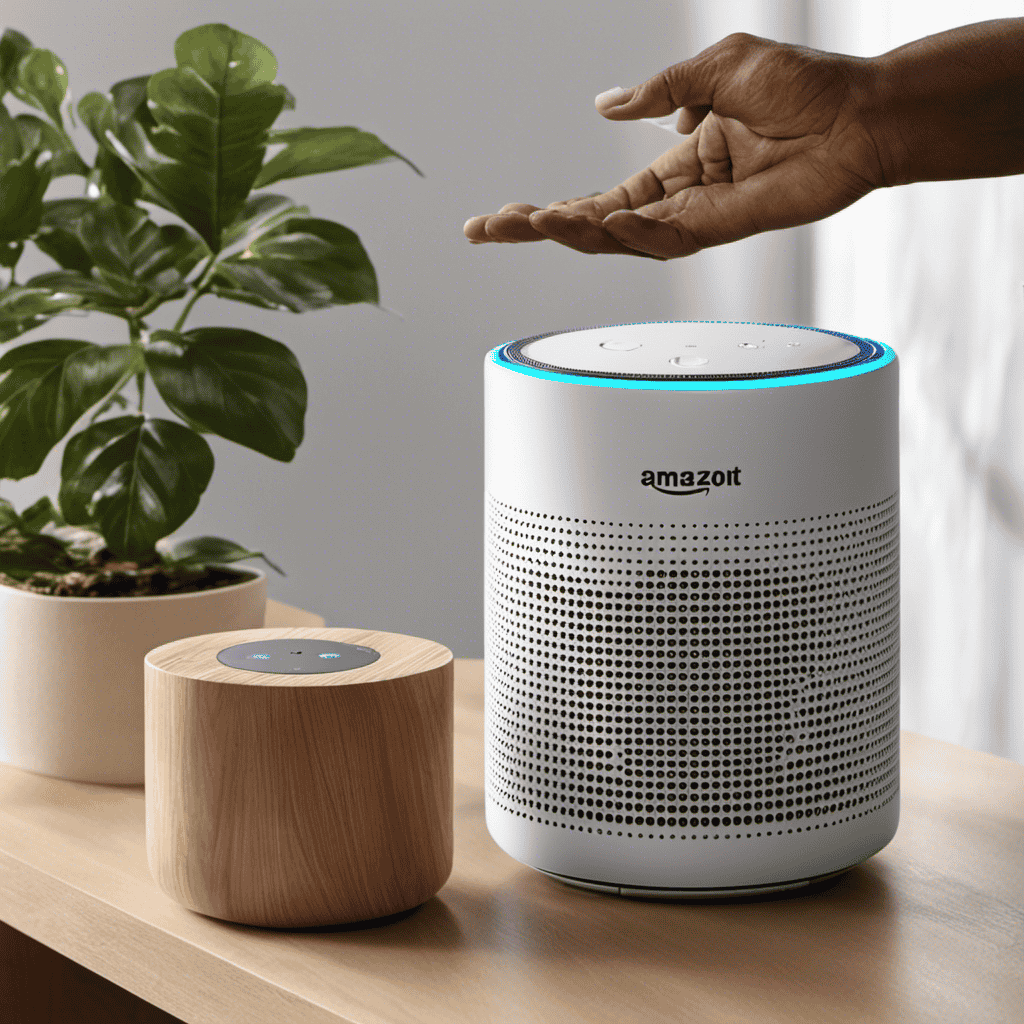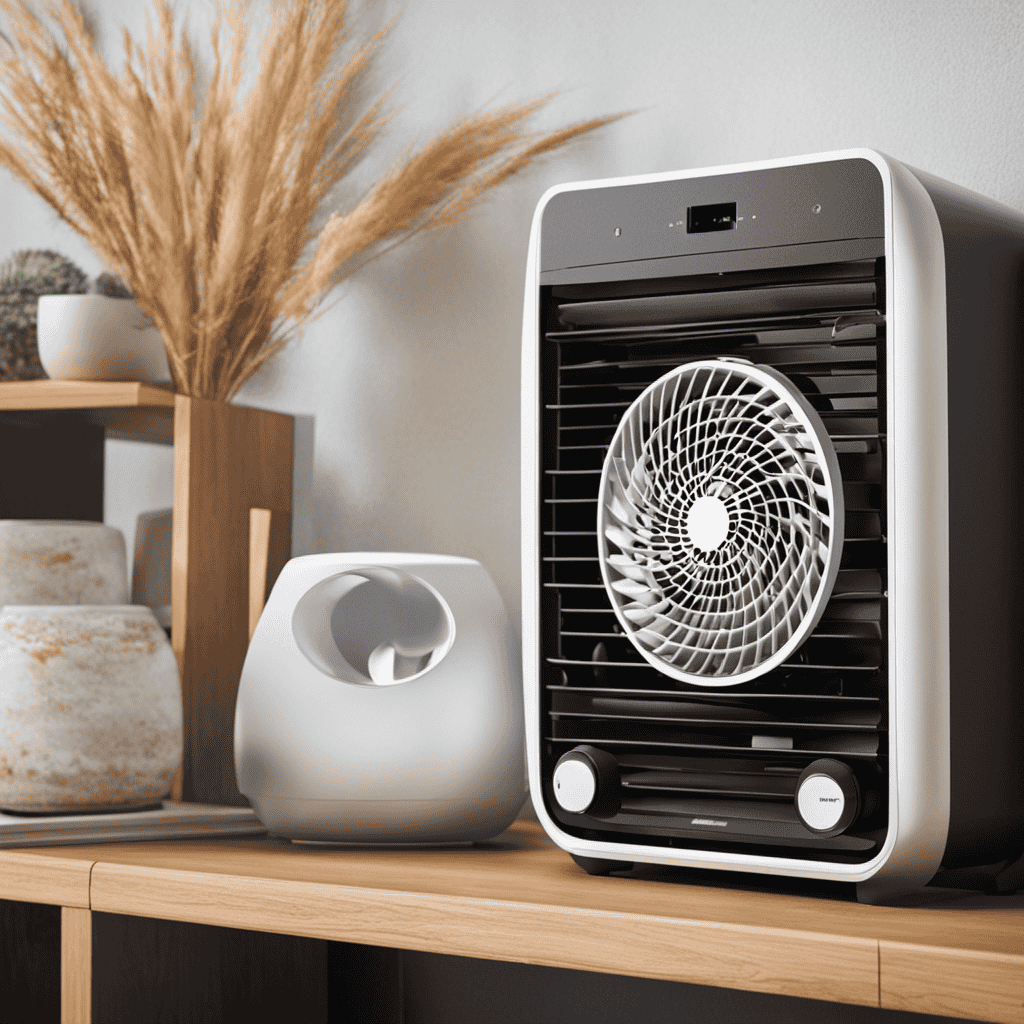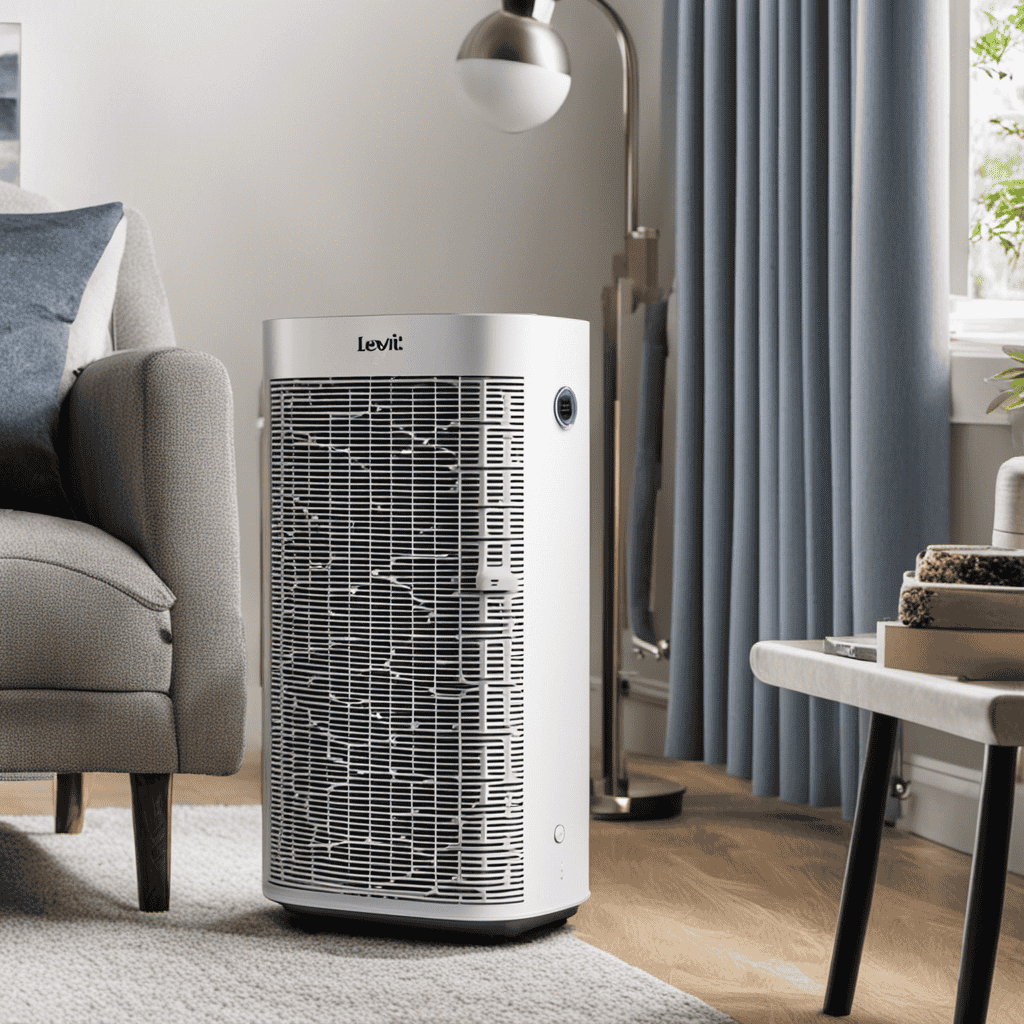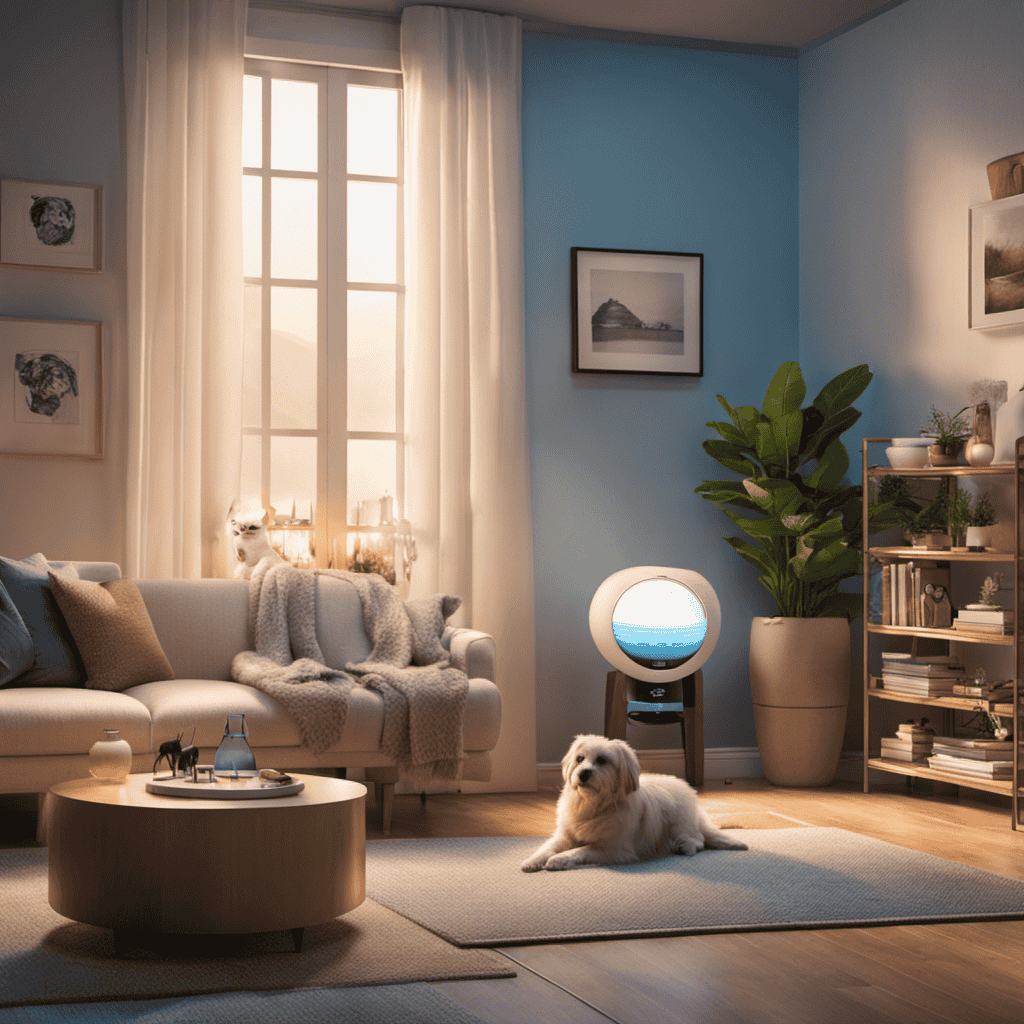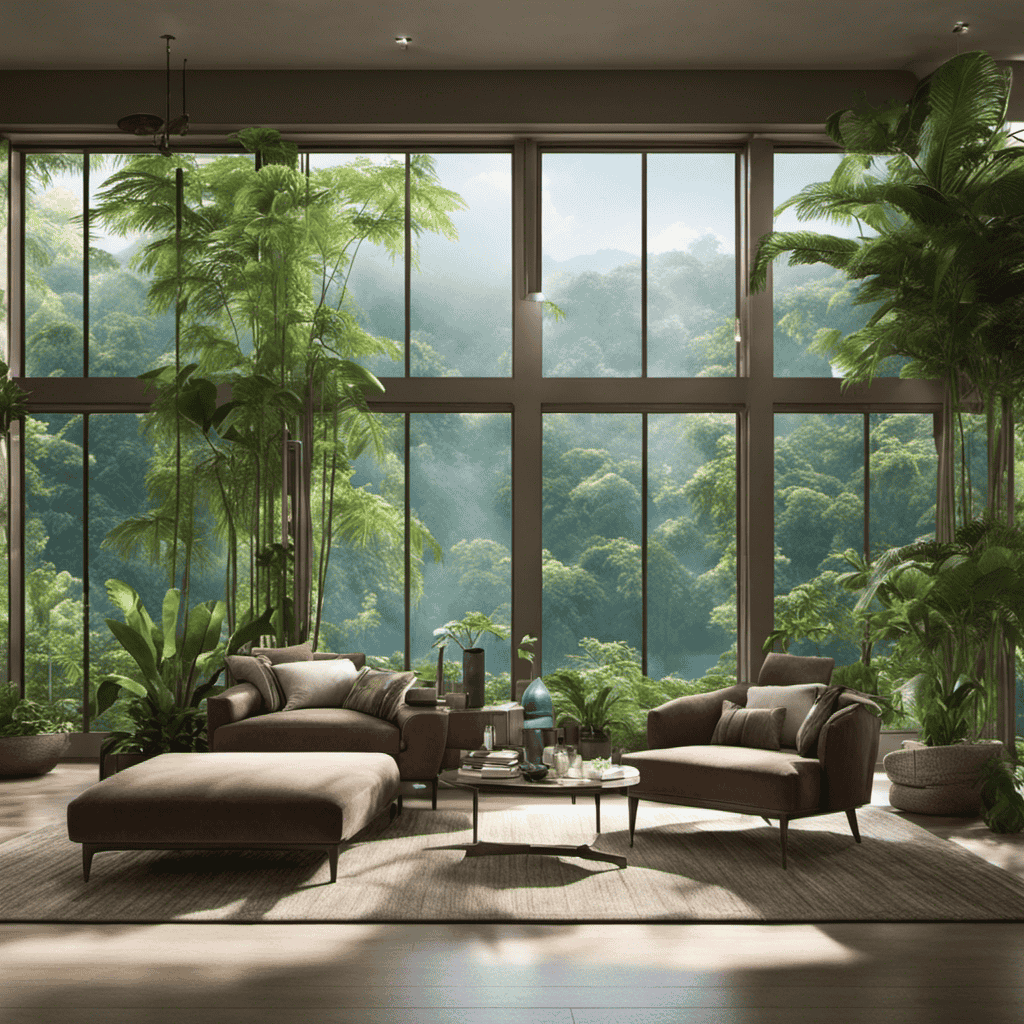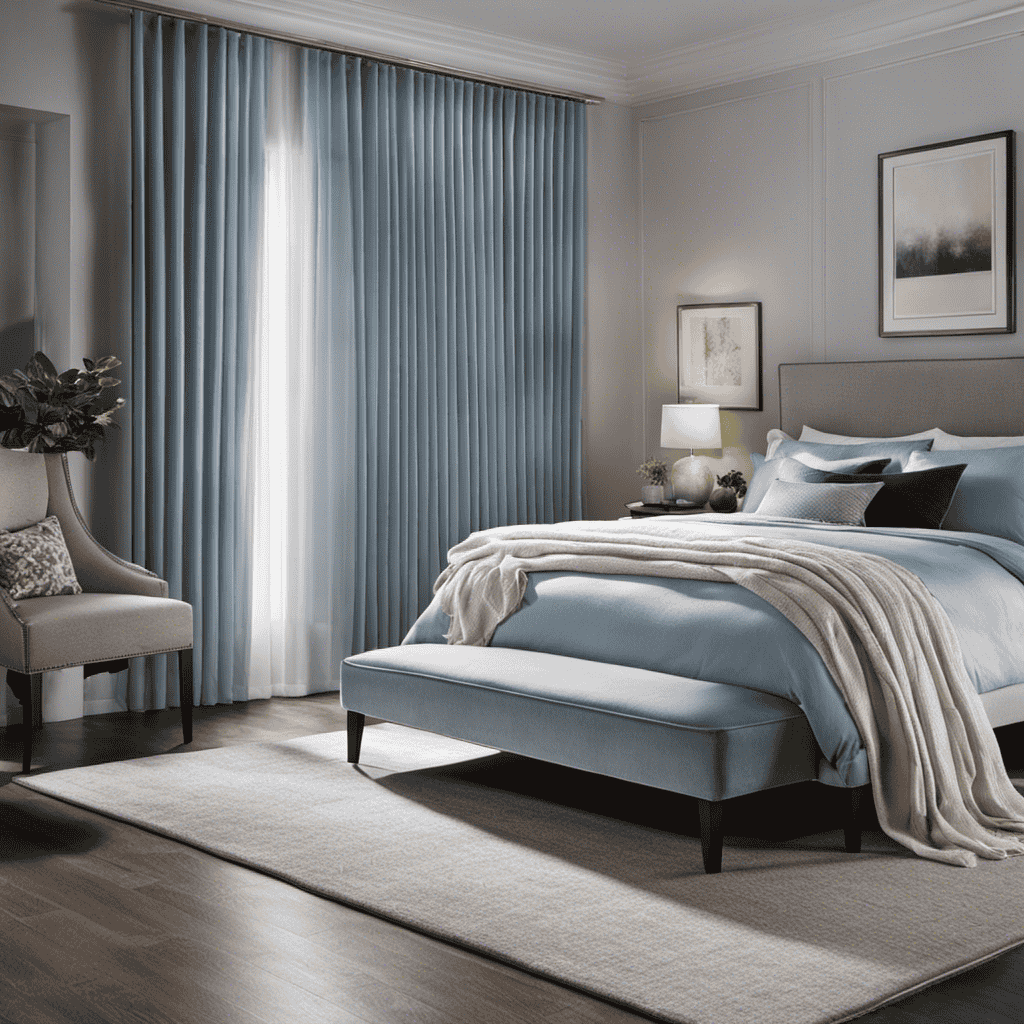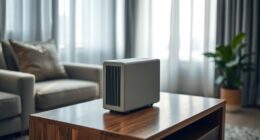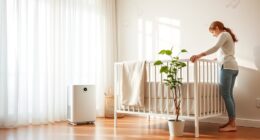Are you curious about how to link your Levoit Air Purifier to Alexa for easier control? You’re in luck! In this detailed guide, I will walk you through the process of setting up your Levoit Air Purifier for Alexa control.
From checking compatibility to troubleshooting common connection issues, we’ve got you covered. With just a few simple steps, you’ll be able to use Alexa voice commands and even create routines to maximize the benefits of connecting your Levoit Air Purifier to Alexa.
Let’s get started!
Key Takeaways
- Verify compatibility between the Levoit air purifier and Alexa by referring to the user manual or manufacturer’s website.
- Connect both the Levoit air purifier and Alexa to the same Wi-Fi network.
- Enable and connect the Levoit skill in the Alexa app, following the prompts to link the Levoit account.
- Troubleshoot connectivity issues by checking internet connection and Wi-Fi stability, moving the air purifier closer to the router, restarting the router and modem, and updating firmware for potential fixes.
Checking Compatibility of Levoit Air Purifier and Alexa
Before proceeding, make sure the Levoit Air Purifier is compatible with Alexa. Checking compatibility is crucial to ensure a smooth connection between the two devices.
To do this, refer to the user manual or visit the manufacturer’s website to confirm if the Levoit Air Purifier supports Alexa integration.
Once you have verified compatibility, you can proceed with the setup process. By connecting your Levoit Air Purifier to Alexa, you can enjoy the benefits of smart home technology.
With voice commands, you can easily control the air purifier, adjust settings, and monitor air quality without even lifting a finger.
Troubleshooting Wi-Fi issues may be necessary if you encounter any connectivity problems during the setup process.
Setting up the Levoit Air Purifier for Alexa Control
To start, you’ll need to make sure your Levoit air purifier and Alexa are connected to the same Wi-Fi network. Once you have that set up, follow these steps to enable voice control and set up schedules for your Levoit air purifier through Alexa:
- Open the Alexa app on your smartphone or tablet.
- Tap on the menu icon in the top left corner and select ‘Skills & Games.’
- Search for the ‘Levoit’ skill and tap on it.
- Tap on the ‘Enable’ button to enable the skill and follow the prompts to link your Levoit account.
With the Levoit skill enabled on the Alexa app, you can now control your air purifier using voice commands and set up schedules for automatic operation.
Now, let’s move on to the next section: enabling the Levoit skill on the Alexa app.
Enabling the Levoit Skill on the Alexa App
Once you’ve completed the previous steps, you’ll simply need to open the Alexa app and follow the prompts to enable the Levoit skill.
To do this, make sure your smartphone or tablet is connected to the internet and launch the Alexa app. Tap on the menu icon in the top left corner and select ‘Skills & Games’ from the drop-down menu.
In the search bar, type ‘Levoit’ and tap on the Levoit skill when it appears in the results. On the skill’s page, tap on the ‘Enable’ button. If prompted, sign in to your Levoit account to link it with Alexa.
Once the skill is enabled, you can control your Levoit air purifier using voice commands through Alexa. If you encounter any issues during this process, make sure your Alexa device is compatible with the Levoit air purifier and check for any troubleshooting steps provided by Levoit or Amazon.
Connecting the Levoit Air Purifier to Your Wi-Fi Network
When it comes to connecting your Levoit Air Purifier to your Wi-Fi network, there are a few key points to keep in mind.
First, you’ll need to go through the Wi-Fi setup process, which involves connecting your purifier to your home network.
If you encounter any issues with connectivity, troubleshooting can help you pinpoint and resolve the problem.
Once your purifier is successfully connected, you can start enjoying the benefits of smart integration, such as controlling your purifier remotely and integrating it with other smart home devices.
Wi-Fi Setup Process
Before beginning the Wi-Fi setup process for connecting the Levoit air purifier to Alexa, make sure you have a stable internet connection. Here’s a step-by-step guide to help you with the process:
- Open the Alexa app on your smartphone or tablet.
- Tap on the menu icon and select ‘Skills & Games.’
- Search for the Levoit skill and enable it.
- Follow the prompts to connect your Levoit account to Alexa.
Once the setup is complete, you can enjoy the benefits of smart home integration. With Alexa, you can control your air purifier using just your voice. You can turn it on or off, adjust the fan speed, or set a schedule without even lifting a finger.
Now that you have successfully set up your Levoit air purifier with Alexa, let’s move on to troubleshooting any connectivity issues you may encounter.
Troubleshooting Connectivity Issues
To troubleshoot any connectivity issues with your Levoit air purifier and Alexa integration, start by checking your internet connection. Ensure that your Wi-Fi is working properly and that you have a stable internet connection. If the issue persists, try optimizing your Wi-Fi connection by following these steps:
- Move your Levoit air purifier closer to your Wi-Fi router to ensure a stronger signal.
- Restart your router and modem to refresh the connection.
- Check that your Wi-Fi network is not overcrowded by too many devices. Disconnect any unnecessary devices.
- Update the firmware of your Levoit air purifier to the latest version, as it may include fixes for connectivity issues.
Benefits of Smart Integration
The benefits of smart integration include having a seamless and convenient experience with your Levoit air purifier and Alexa. Here are some advantages of voice control and the convenience of smart home integration:
-
Hands-free operation: With smart integration, you can control your Levoit air purifier using voice commands. Simply ask Alexa to turn on or off the purifier, adjust the fan speed, or set a timer without lifting a finger.
-
Accessibility: Voice control allows you to conveniently operate your air purifier from anywhere in your home. Whether you’re in another room or on the couch, you can easily manage the purifier’s settings using just your voice.
-
Integration with other devices: Smart integration enables you to connect your Levoit air purifier with other smart home devices. This integration allows you to create routines and automation, such as having the purifier turn on automatically when you enter a certain room or at specific times of the day.
-
Enhanced user experience: By integrating your Levoit air purifier with Alexa, you can enjoy a more streamlined and intuitive user experience. With voice control, managing your air purifier becomes effortless and adds convenience to your daily routine.
Now, let’s explore how to discover the Levoit air purifier on the Alexa app.
Discovering the Levoit Air Purifier on the Alexa App
Once you’ve downloaded the Alexa app, you can easily discover the Levoit Air Purifier by following these steps.
First, open the Alexa app on your smartphone or tablet.
Next, tap on the menu icon located on the top left corner of the screen.
From the menu, select ‘Skills & Games.’
In the search bar, type ‘Levoit Air Purifier’ and tap on the search icon.
The Levoit Air Purifier skill should appear in the search results. Tap on it to open the skill page.
Finally, tap on the ‘Enable’ button to enable the skill and connect your Levoit Air Purifier to Alexa.
Now you can use voice commands to control your air purifier and enjoy the convenience of Alexa’s features.
If you encounter any connection problems, make sure your Levoit Air Purifier is turned on and connected to Wi-Fi, and try disabling and re-enabling the skill.
Linking the Levoit Air Purifier to Your Alexa Device
Setting up your Alexa device to work with the Levoit Air Purifier is a simple process that can greatly enhance your smart home experience.
First, make sure that your Alexa device is compatible with the Levoit Air Purifier. You can check the compatibility by referring to the user manual or doing a quick search online.
Once you’ve confirmed compatibility, follow these step-by-step instructions to connect your Alexa device to the Levoit Air Purifier and enjoy the convenience of voice control.
Compatible Alexa Devices
To connect your Levoit air purifier to Alexa, you’ll need compatible devices. Here’s a step-by-step guide to help you get started:
-
Check compatibility: Ensure that your Levoit air purifier supports Alexa integration. Not all models are compatible, so refer to the product manual or Levoit’s website for a list of supported devices.
-
Set up your Alexa device: Make sure your Alexa device is connected to your Wi-Fi network and registered to your Amazon account. Follow the instructions provided by Amazon to complete the setup process.
-
Enable the Levoit skill: Open the Alexa app on your smartphone and search for the Levoit skill. Enable the skill and link it to your Levoit account using your login credentials.
-
Discover devices: In the Alexa app, navigate to the ‘Devices’ tab and select ‘Discover.’ Alexa will search for compatible devices, including your Levoit air purifier. Once discovered, you can control your air purifier using voice commands.
If you encounter any connectivity issues, try restarting your Alexa device, ensuring that your air purifier is within range of your Wi-Fi network, and double-checking your device compatibility.
Setup Instructions for Alexa?
Make sure your Wi-Fi network is connected and your Amazon account is registered to set up your Alexa device for use with compatible devices. Here are the step-by-step setup instructions to connect your Levoit Air Purifier to Alexa:
- Open the Alexa app on your smartphone or tablet.
- Tap on the menu icon in the top-left corner and select ‘Skills & Games.’
- Search for ‘Levoit Air Purifier’ in the search bar and select it from the results.
- Tap on the ‘Enable’ button to enable the skill.
- Follow the on-screen prompts to link your Levoit account to Alexa.
- Once linked, you can control your air purifier using voice commands with Alexa.
If you encounter any issues during setup, try the following troubleshooting tips:
- Ensure that your air purifier is powered on and connected to the same Wi-Fi network as your Alexa device.
- Restart your Alexa device and the air purifier.
- Make sure you have the latest firmware updates for both devices.
- Double-check that your Amazon account is registered and connected to your Alexa device.
With these setup instructions and troubleshooting tips, you’ll be able to connect your Levoit Air Purifier to Alexa and enjoy the convenience of voice control.
Troubleshooting Common Connection Issues
If you’re having trouble connecting your Levoit air purifier to Alexa, there are a few common issues you can troubleshoot.
-
Check your Wi-Fi connection: Make sure your Wi-Fi is working properly and that your device is connected to the same network as your Alexa device.
-
Ensure device compatibility: Confirm that your Levoit air purifier is compatible with Alexa. Not all models have built-in Alexa compatibility, so check the product specifications or consult the user manual.
-
Restart your devices: Try restarting both your Levoit air purifier and your Alexa device. Sometimes a simple reboot can resolve connectivity issues.
-
Reset and re-pair: If all else fails, you can try resetting your Levoit air purifier and re-pairing it with Alexa. Follow the instructions in the user manual to complete the process.
Using Alexa Voice Commands to Control the Levoit Air Purifier
When setting up your Levoit air purifier with Alexa, simply say ‘Alexa, turn on the air purifier’ to start controlling it with your voice. Controlling air quality has never been easier with voice-activated purification.
Here’s a step-by-step guide on how to use Alexa voice commands to control your Levoit air purifier:
-
Make sure your Levoit air purifier is connected to your Wi-Fi network and linked to your Alexa device.
-
Open the Alexa app on your smartphone and go to the Skills & Games section.
-
Search for the Levoit skill and enable it.
-
Once enabled, you can now use voice commands to control your air purifier. For example, say ‘Alexa, turn on the air purifier’ to start it.
-
You can also adjust the fan speed by saying ‘Alexa, set the air purifier to high/medium/low’ or set a specific timer by saying ‘Alexa, set a timer for 2 hours for the air purifier’.
With voice-activated purification, you can effortlessly control the air quality in your home.
Creating Alexa Routines for the Levoit Air Purifier
To easily control the Levoit air purifier using voice commands, create routines on Alexa. Routines allow you to automate multiple actions with a single command. Here’s how you can create custom routines to optimize your air purifier’s performance:
- Open the Alexa app on your smartphone and tap on the ‘Routines’ tab.
- Tap on the ‘+’ icon to create a new routine.
- Give your routine a name, like ‘Air Purifier On.’
- Under ‘When this happens,’ select the trigger for your routine, such as ‘Alexa, good morning.’
- Under ‘Add action,’ select ‘Smart Home’ and choose your Levoit air purifier.
- Set the desired fan speed and other settings for your routine.
- Tap ‘Save’ to create your custom routine.
With these custom routines, you can easily optimize your air purifier’s performance without having to manually adjust the settings every time.
Maximizing the Benefits of Connecting Levoit Air Purifier to Alexa
By connecting your Levoit air purifier to Alexa, you can maximize the benefits and easily control the device using voice commands. Not only does this integration make managing your air purifier more convenient, but it also allows you to maximize its air purification efficiency.
To get started, ensure that your Levoit air purifier is compatible with Alexa. Next, download and open the Alexa app on your smartphone or tablet. In the app, go to the Skills & Games section and search for the Levoit skill. Enable the skill and follow the on-screen instructions to link your Levoit account with Alexa.
Once the setup is complete, you can use voice commands to turn on or off your air purifier, adjust fan speed, set timers, and even check the air quality in your home.
Additionally, integrating your Levoit air purifier with other smart home devices, such as smart plugs or thermostats, allows you to create automation routines that further optimize air purification and enhance your overall home environment.
Conclusion
In conclusion, connecting your Levoit air purifier to Alexa is a simple process that can greatly enhance your home’s air quality and convenience. By following the step-by-step instructions outlined in this article, you can easily set up and control your air purifier using voice commands through Alexa.
With the ability to create routines and maximize the benefits of this connection, you can enjoy cleaner air and a more comfortable living environment. So go ahead and take advantage of this technology to breathe easier and simplify your daily routine.
